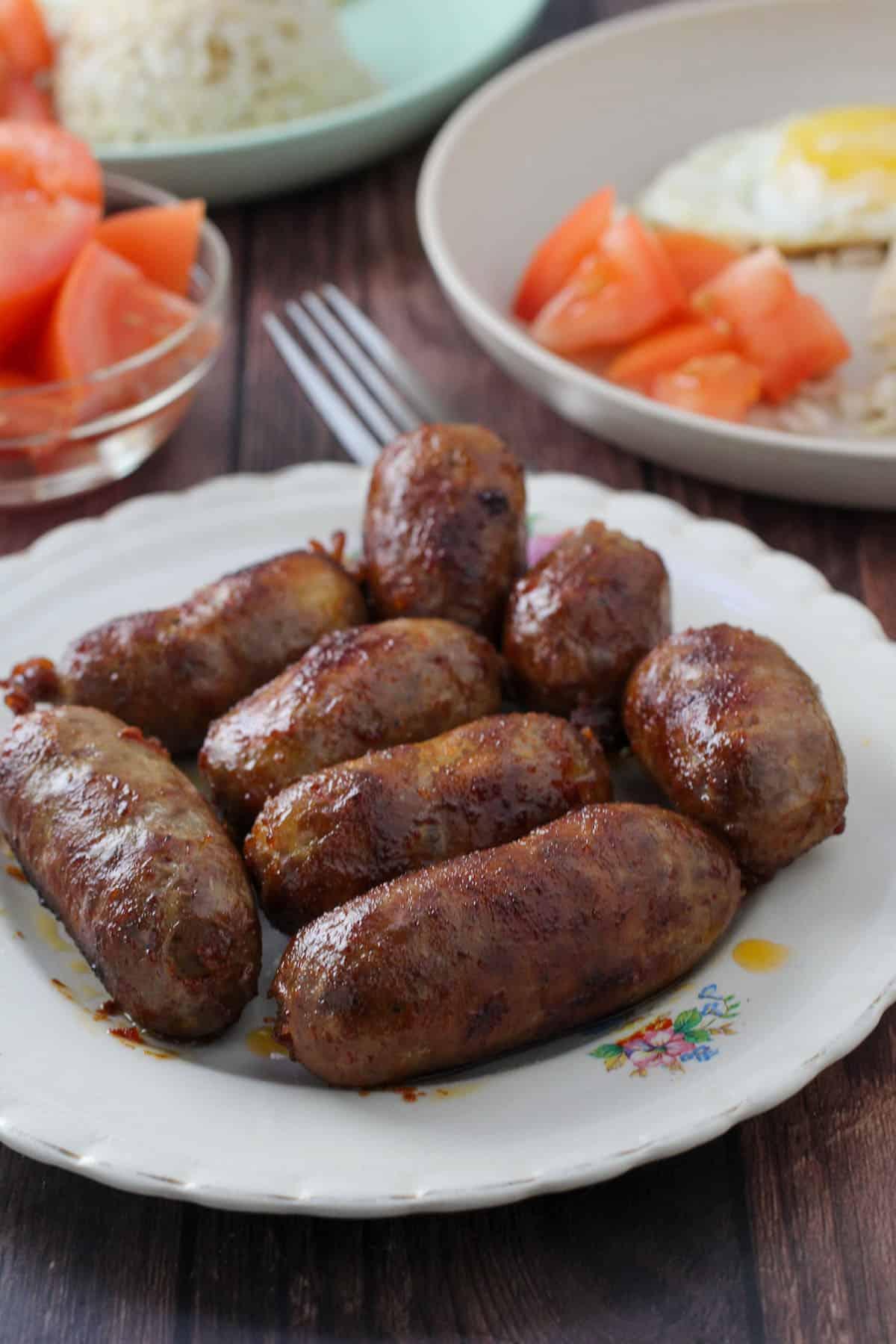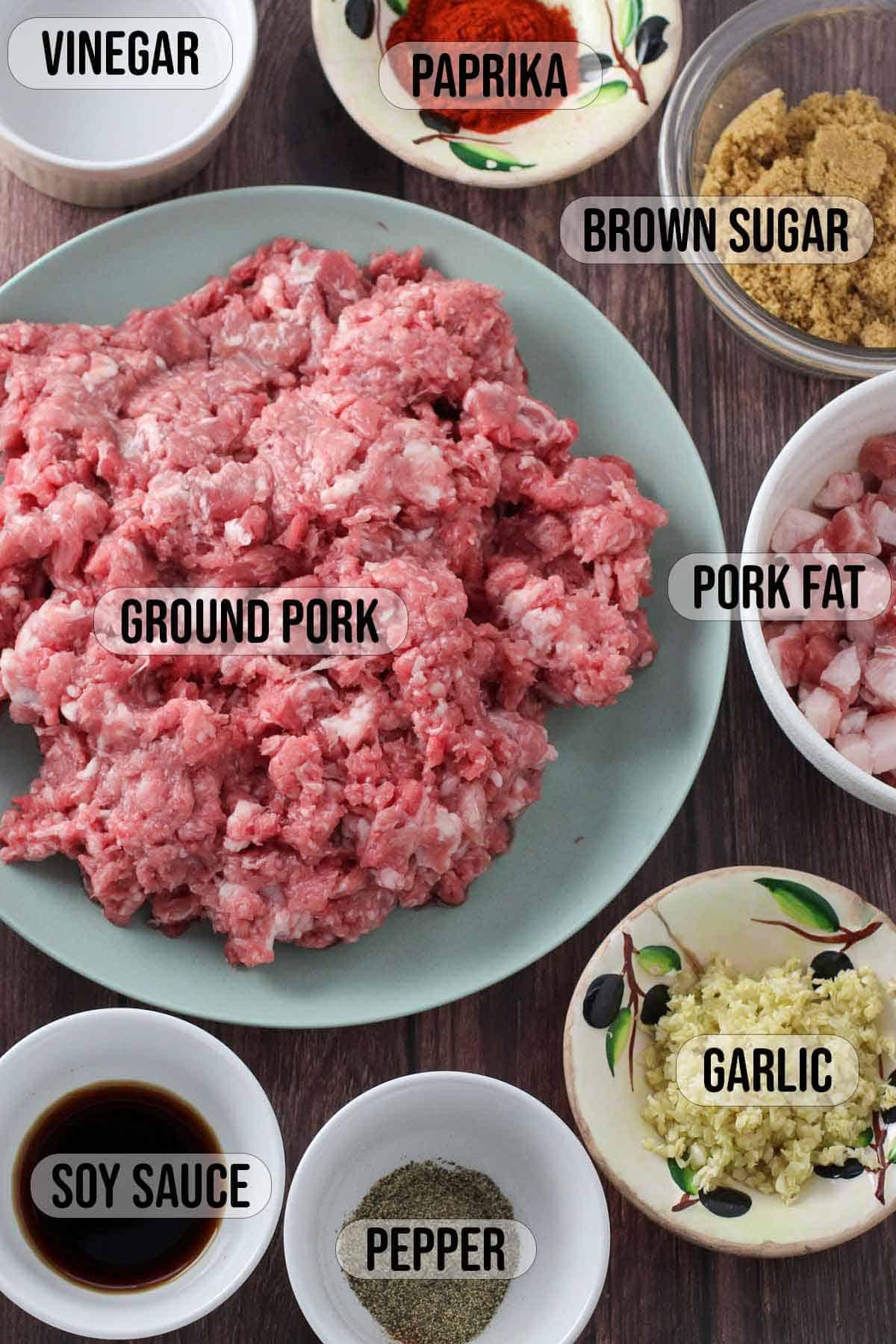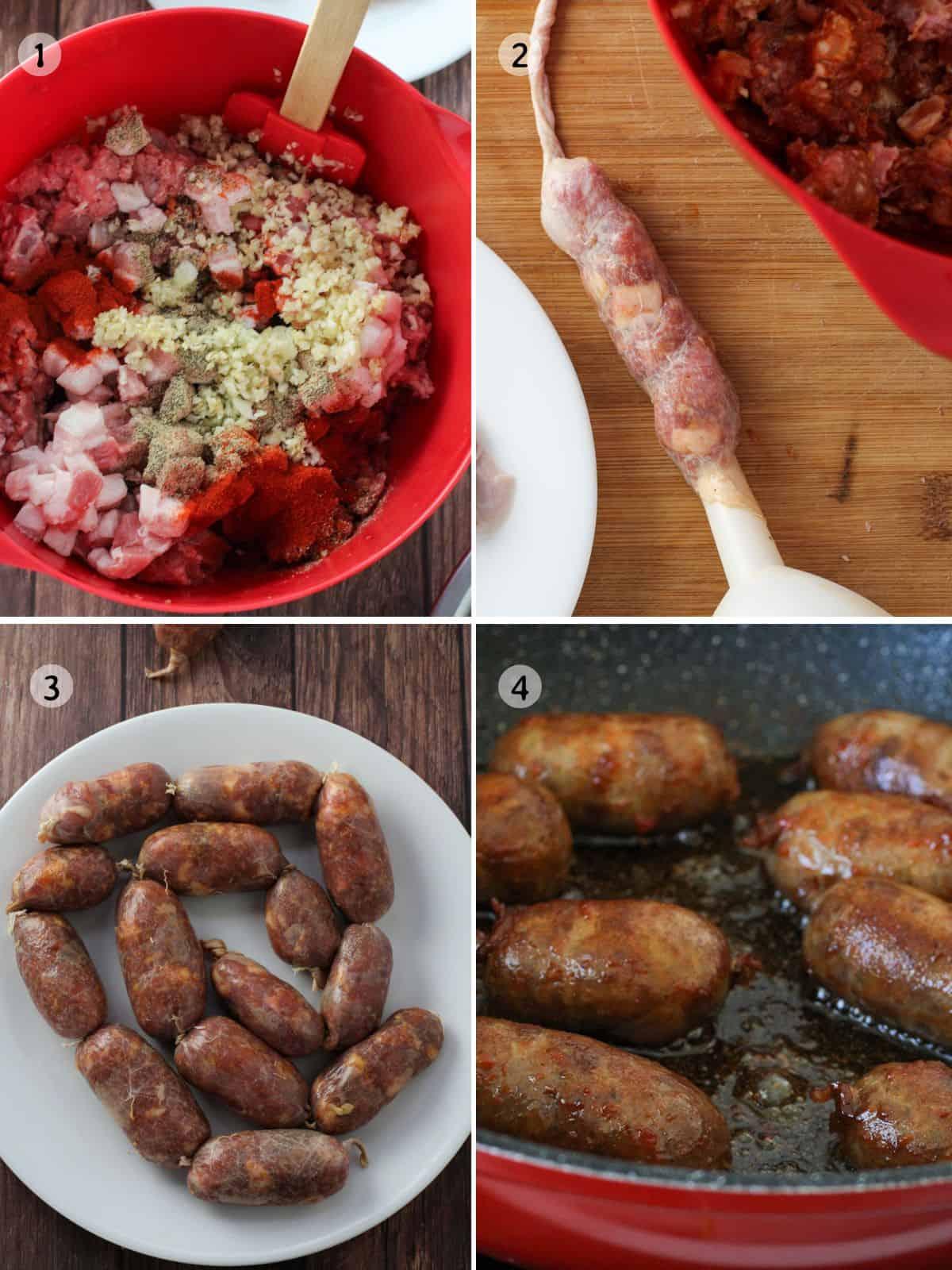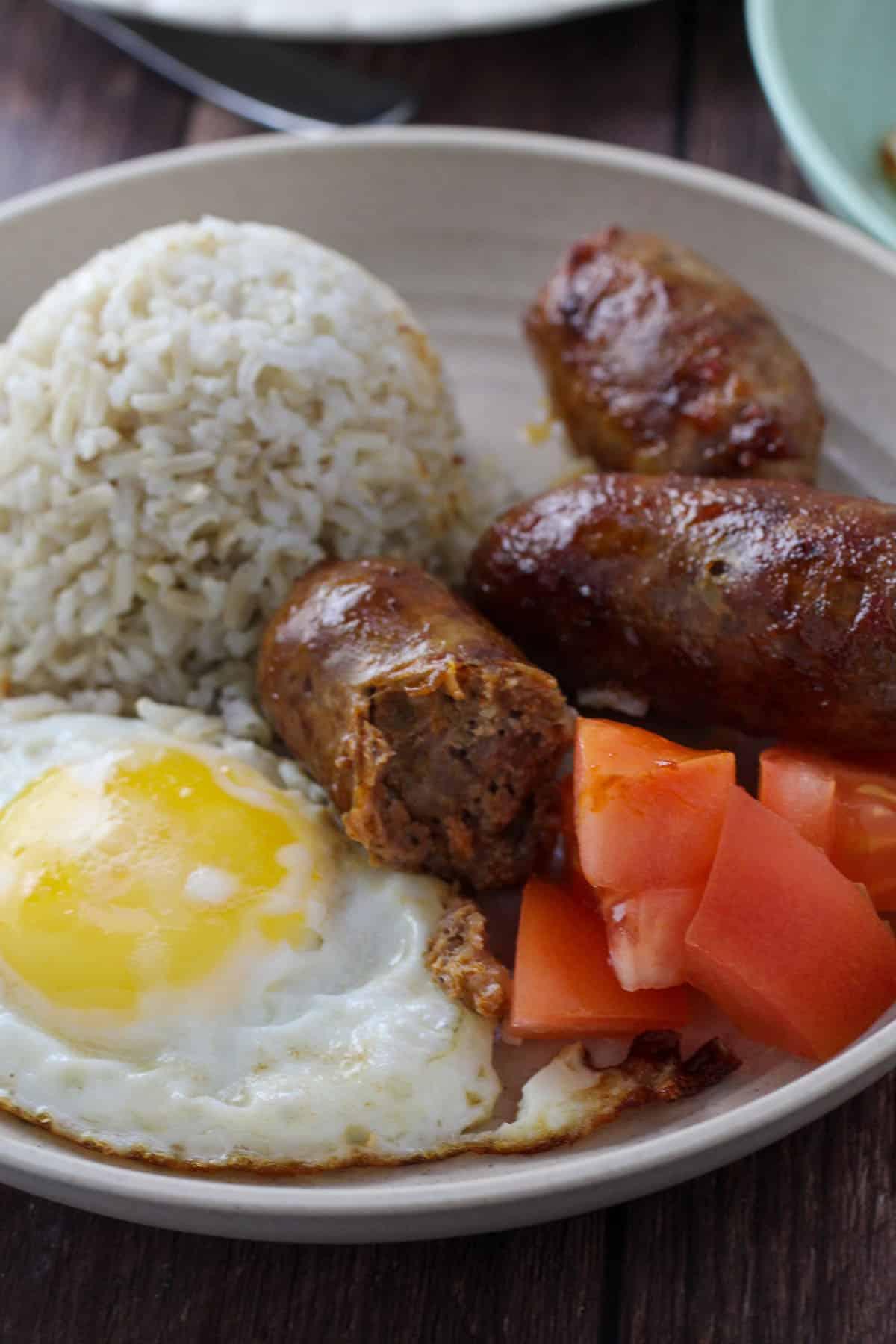Longganisa is a beloved Filipino breakfast dish that is often part of the iconic “Long-si-log” trio, which includes fried rice (sinangag) and fried egg (itlog). This delectable sausage is expertly made by stuffing hog casings with seasoned ground pork, resulting in a savory-sweet flavor explosion that tantalizes the taste buds.

Hey there! Let me take a moment to share an exciting culinary adventure I had recently. Amidst my busy week, I managed to conquer some tasks on my to-do list. From scheduling content on my Facebook page to updating blog posts, testing recipes, and answering emails, I accomplished quite a lot. But you know what I’m genuinely thrilled about? Making my very own homemade Filipino-style longganisa. And not just any longganisa, but the authentic kind, complete with its natural casing. Oh, the joy and satisfaction that came with it!
For the longest time, longganisa hamonado has been on my culinary bucket list. So, when I stumbled upon hog casings at a Mexican supermarket, I knew it was time to bring my dream to life. Gathering all the necessary ingredients, I spent an afternoon mixing, stuffing, and knotting, resulting in a plentiful supply of longsilog breakfasts. I couldn’t be happier!
Ingredients Notes

To create the perfect longganisa, you’ll need a few key ingredients:
- Lean ground pork: Typically sourced from pork shoulder, choose an 80/20 fat ratio for optimal results.
- Ground pork back fat: This addition lends juiciness and enhances the overall flavor.
- Seasonings and spices: The combination of paprika, salt, pepper, soy sauce, vinegar, and fresh garlic elevates the taste profile.
- Sugar: Adding a touch of sweetness is essential for the hamonado-style sausage.
- Anisado wine: A cooking wine made from anise herb and distilled sugar cane wine, it is commonly used in various processed meat products.
- Hog casings: These are sourced from cleaned intestinal membranes of hogs and can be found in both dry and fresh varieties. Hog casings enclose the sausage ingredients.
- Water and oil: These are required for cooking the sausages.

Equipment Needed
To make the longganisa process smooth, you’ll require the following equipment:
- Funnel: This handy tool makes stuffing the casings a breeze.
- Kitchen twine: Use it to securely tie off individual sausages.
The Process of Making Longganisa

Now, let’s dive into the steps to create your very own longganisa:
-
Prepare the meat filling: In a bowl, combine ground pork, minced pork fat, soy sauce, vinegar, anisado wine, sugar, salt, pepper, paprika, and garlic. Refrigerate this mixture for approximately 2 hours, allowing the flavors to meld and the meat to firm up.
-
Stuff the casings: Soak the hog casings in warm water for 30 minutes, then drain them thoroughly. In the sink, run warm water through the casings, checking for any leaks and removing those sections. Attach a funnel nozzle to one end of the casing. Scoop the pork mixture into the funnel, gently packing it into the casings, leaving about 5 inches on both ends. Secure one end with a double knot or by using fine kitchen twine.
-
Separate into individual links: Pinch the sausage at intervals of approximately 4 inches, gently twisting each link at the “pinched” point with one complete rotation. Repeat this process, alternating the direction of twisting (towards you and away from you) for each link. Secure the other end with a double knot or kitchen twine. Place the longganisa in a ziplock bag and refrigerate overnight.
-
Pan-fry the longganisa: When you’re ready to cook, cut the sausage into individual links and prick each one once or twice with the tip of a knife. Place the sausages in a wide pan with water and bring it to a boil. Reduce the heat, cover the pan, and let it simmer until the meat is fully cooked and the liquid is nearly absorbed. Add oil to the pan and continue to cook, stirring regularly, until the sausages are beautifully caramelized. Remove the sausages from the pan and serve them piping hot.

How to Serve and Store
Longganisa is traditionally enjoyed for breakfast or as part of any meal throughout the day, commonly accompanied by garlic fried rice (sinangag) and fried eggs (itlog).
Should you find yourself with any uncooked longganisa links, store them in resealable bags or airtight containers in the freezer, where they can keep for up to 6 months.
Leftover cooked longganisa can be stored in the refrigerator for up to 3 days or in the freezer for up to 2 months. Simply reheat in the microwave or re-fry before serving. And here’s a fun idea: you can even use any leftover filling to make delicious longganisa wontons!
Now that you have the secrets to crafting your own homemade longganisa, why not give it a try? Embrace the flavors of the Philippines and create a breakfast experience that will make you feel right at home. For more exciting recipes and culinary inspiration, head over to Ekilove, your go-to destination for all things delicious!



